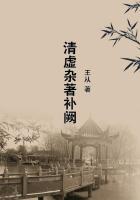The economic corporation, which owns the allmends , is distinct from the political body which constitutes the commune.
Thus at Stanz in the Nidwald, the inhabitants of the commune form a body called die dorfleute zu Stanz . They meet in ageneral assembly and regulate directly the affairs of the commune; and they take part in the communal banquet, which is heldevery year, in commemoration of the battle of Rossberg fought in 1308. The economic corporation is called Theilsame , andis composed of the commoners of Oberdorf and Stanz together. The separation between the inhabitants who have the rightof common and those who are without it, dates from 1641, and is always respected. This example shews that, absolute, oractually equal, democracies are very conservative. Thus the constitutions of the states of New England, which are likewiseultra-democratic, are the oldest in existence.
Anciently the whole canton of Unterwalden formed a single community, the members of which had a right of common overthe whole territory. When seignories and abbeys were formed, they gradually usurped a portion of the common domain ofthe mark. Serarate jurisdictions were constituted in this way, and each of them wanted to have its separate property. Suchwas the origin of the existing associations of commoners, which remained separate, even after the suppression of theseignories. The feudal lords had not sufficient power to invade the rights of the peasant partners, Markggnossen . On thecontrary, the latter maintained their right of common over the lord's land, which never entirely freed itself from the eminentdomain of the commun!ty. In his character of markgenoss, or "commoner," the lord had his share in the enjoyment of theAllmends. Thus, M. Heusler quotes a deed of the year 1227, by which Dietrich von Opphau sells to the monastery ofSchoenau, "praedia sua in Sunthoven, agros, prata, curtes, areas, almeine." Mone copies another text, which has nearly thesame sense: "Hoba cum omnibus utilitatibus, ad eamdem hobam rite attinentibus, id est marca, silvae, sagina, acquis,pascuis." (1) Land was sold with the rights of common attached to it, cum onni utilitate , or with the communio in marchis , Ina suit between the bailiff and the inhabitants of Küssnacht, in 1302, the judgment recognized no greater right in therepresentative of the feudal seignory than in the other commoners. The free peasants had already gained such an ascendancyat this period, that, in 1355, we find the inhabitants of Arth purchasing all the rights of seignory of the place. See A.
Heusler, (2)
Is this right of user over the common property a real or a personal right? Is it attached to the quality of the person, or is itappendant on landed property? Originally, there is no doubt, the right was purely personal, as it belonged to everyMarkgenoss, to every member of the association of commoners. It was the natural right of property belonging to theassociated inhabitants of the mark. Later, however, when it was decided that, in order to exercise the right of common, theinhabitant must support cattle, which he wished to send on to the common pasture, on his individual property during acertain period, certain jurists, especially in the thirteenth century, declared it to he a real right; and speak of it as appendantto private property. This is altogether a mistake. In order to exercise the right of common, it is not enough to have propertywithin the commune, or even to be a member of it; it is further necessary to be a member, by descent, of the association ofcommoners. The right of common cannot be assigned or transferred, which would be allowable if it were a real right. Whenthe commoner has not kept cattle himself through the winter, he cannot exercise his right to common pasturage by means ofcattle borrowed or purchased in the spring. His right exists none the less, although its exercise is, for the time, suspended. Itis the same when he leaves the commune, he cannot let his right of common; but, if he returns, and keeps cattle through thewinter, he is once more allowed to exercise his right. This right is inherent in his person, and he does not lose it except byentering another community, which is of very rare occurrence.
As a rule, the right of common belongs to every separate couple of hereditary usufructuaries, who have had "fire and light"within the commune, during the year or else at some fixed date : thus, at Wolfenschiessen, the commoner must have passedthe night of March 15 there. In strict theory, it is only when he marries and founds a new family, that a young man can claimthe right of common in "forest, pasture and arable"; but by an extension of this rule, the right is also recognized of a widow,or orphans living together, sometimes even of every son of an associate who attains the age of twenty-five, provided he livein a separate house. In the Nidwald unmarried daughters, living apart, Laubenmeidli , have the same right. Generally, naturalchildren, whose parentage is known, may also claim their share in the "wood, alp and field," ( Holz , Alp und Feld ):
sometimes, however, their right is restricted. Thus, at Beggenried, they are excluded from the use of the alp. The right ofcommon may be purchased, but only with the unanimous consent of the commoners. Its price increased very rapidly, evenduring the middle ages -- thus, at Stanz, it was purchased in 1456 for 5 sols ; in 1523 for 50; in 1566 for 100; in 1577 for400. in 1630 for 800; and in 1684 for 1200.














